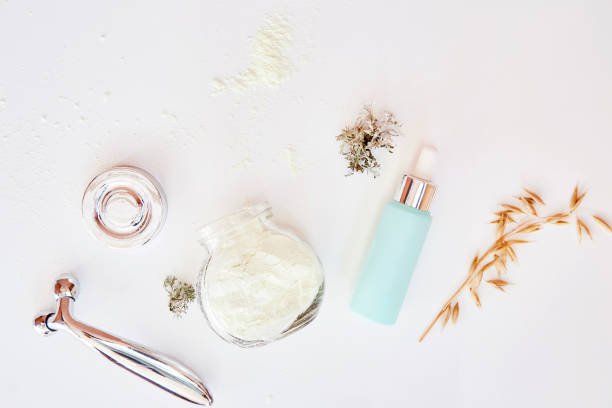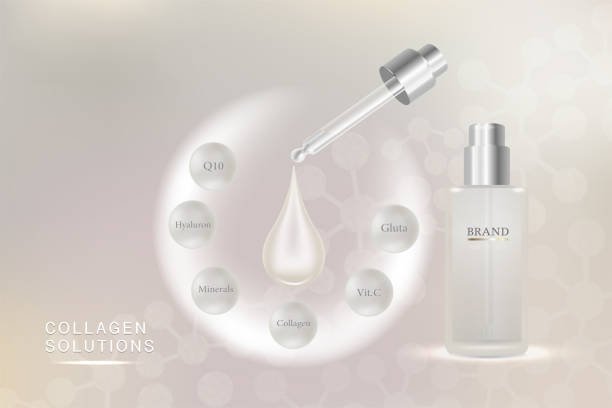Right Face Cream and Serum can feel overwhelming with the multitude of options available in the skincare market. Each product promises to deliver remarkable results, but understanding your skin’s specific needs is key to making the right choice. This guide will help you navigate the selection process, highlighting essential factors to consider and recommending popular ingredients for various skin types.
Understanding Your Skin Type

Before selecting any skincare products, it’s crucial to identify your skin type. This understanding will help you choose formulations that cater to your unique needs. The main skin types are:
1. Normal Skin
Normal skin is characterized by balanced moisture levels, not too oily or dry. If you have normal skin, you can generally use a wide range of products.
2. Oily Skin
Oily skin often appears shiny and may be prone to acne and enlarged pores. Look for lightweight, oil-free creams and serums that won’t clog your pores.
3. Dry Skin
Dry skin can feel tight, rough, or flaky. Creams and serums with hydrating ingredients are essential for maintaining moisture and preventing irritation.
4. Combination Skin
Combination skin features both oily and dry areas. Tailor your choices to address the specific needs of each area, often selecting lighter products for oily zones and richer formulations for dry patches.
5. Sensitive Skin
Sensitive skin may react negatively to certain ingredients, leading to redness or irritation. Opt for fragrance-free and hypoallergenic products.
Key Ingredients to Consider
Once you identify your skin type, look for specific ingredients that will benefit your skin. Here are some popular ingredients categorized by skin concerns:
Hydrating Ingredients
- Hyaluronic Acid: A powerful humectant that attracts moisture, suitable for all skin types, especially dry skin.
- Glycerin: Another excellent humectant that helps retain moisture and keeps skin hydrated.
Anti-Aging Ingredients
- Retinol: A derivative of vitamin A that promotes cell turnover, reducing fine lines and wrinkles. Best for mature skin.
- Peptides: Amino acids that help stimulate collagen production, improving skin elasticity and firmness.
Brightening Ingredients
- Vitamin C: An antioxidant that helps brighten the complexion and reduce dark spots.
- Niacinamide: A form of vitamin B3 that improves skin tone and texture while reducing redness.
Soothing Ingredients
- Aloe Vera: Known for its calming properties, ideal for sensitive or irritated skin.
- Chamomile Extract: Soothes inflammation and redness, making it suitable for sensitive skin types.
Exfoliating Ingredients
- Alpha Hydroxy Acids (AHAs): Such as glycolic acid, which helps remove dead skin cells for a brighter complexion.
- Beta Hydroxy Acid (Salicylic Acid): Penetrates deep into pores, making it great for oily and acne-prone skin.
Choosing the Right Face Cream
1. Determine the Purpose
Identify the primary reason for using a face cream. Are you looking for hydration, anti-aging benefits, or protection against environmental stressors? The purpose will guide your choice.
2. Texture Matters
Face creams come in various textures—gel, lotion, cream, or balm. For oily skin, opt for a gel or lightweight lotion. For dry skin, a richer cream or balm will provide the necessary moisture.
3. Consider the Season
Your skincare needs may change with the seasons. In winter, opt for heavier creams to combat dryness. In summer, lighter, oil-free formulations may be more suitable.
4. SPF Protection
If you’re selecting a daytime cream, consider one with built-in sun protection (SPF). Protecting your skin from UV rays is essential for preventing premature aging and skin cancer.
5. Read Reviews
Researching product reviews can provide insights into how well a cream works for others with similar skin types and concerns.
Choosing the Right Serum
1. Understand the Concentration
Serums typically contain higher concentrations of active ingredients than creams, making them potent for targeting specific issues. Determine what skin concern you want to address.
2. Look for Targeted Formulations
Choose serums formulated to tackle your specific skin issues, such as hydration, brightening, or anti-aging. This focused approach will enhance the effectiveness of your skincare routine.
3. Compatibility with Other Products
Ensure that the serum you choose works well with your other skincare products. Avoid layering ingredients that can be irritating, such as using retinol and AHAs together.
4. Patch Test New Products
Before fully incorporating a new serum into your routine, conduct a patch test to ensure you won’t experience an adverse reaction.
Application Tips
1. Layering Products
When using both a cream and serum, apply the serum first. Serums are typically lighter and should penetrate the skin before applying a cream on top to lock in moisture.
2. Use the Right Amount
A pea-sized amount of serum is usually sufficient. For face cream, a dime-sized amount should be enough. Using too much can lead to product buildup and clogged pores.
3. Massage Technique
Gently massage the products into your skin using upward, circular motions. This technique helps improve blood circulation and ensures even absorption.
4. Timing Matters
For optimal results, apply your serum and cream twice daily—once in the morning and once at night. Nighttime is particularly beneficial for skin repair and regeneration.
Lifestyle Factors Impacting Skin Health

Choosing the right products is only one part of maintaining healthy skin. Lifestyle factors also play a significant role:
1. Diet and Hydration
A balanced diet rich in fruits, vegetables, and healthy fats contributes to skin health. Staying hydrated by drinking plenty of water also helps maintain skin moisture.
2. Sleep
Adequate sleep is crucial for skin repair. Aim for 7-9 hours of quality sleep each night to allow your skin to rejuvenate.
3. Stress Management
Chronic stress can lead to skin issues such as breakouts or dullness. Incorporate stress-reducing practices, such as meditation or yoga, into your routine.
4. Regular Exercise
Physical activity increases blood flow, delivering oxygen and nutrients to your skin. Aim for at least 150 minutes of moderate exercise each week.
Conclusion
Choosing the right face cream and serum requires careful consideration of your skin type, specific concerns, and desired results. By understanding the key ingredients and applying the tips outlined in this guide, you can make informed decisions that will enhance your skincare routine. Remember that consistency is key; with the right products and a holistic approach to skin health, you can achieve a radiant and youthful complexion.
Ultimately, take your time experimenting with different products until you find the perfect combination that works for you. Your skin is unique, and with the right care, it can thrive beautifully.

